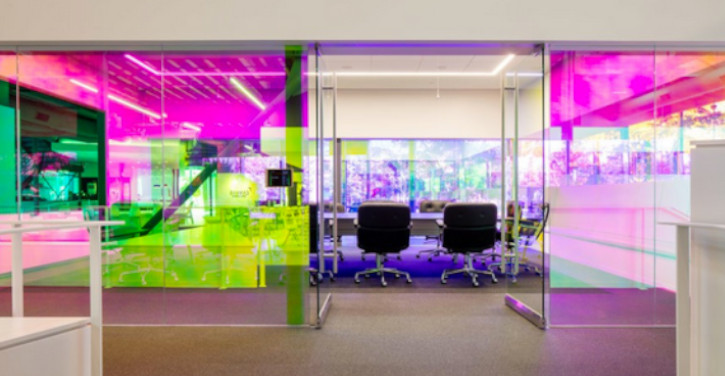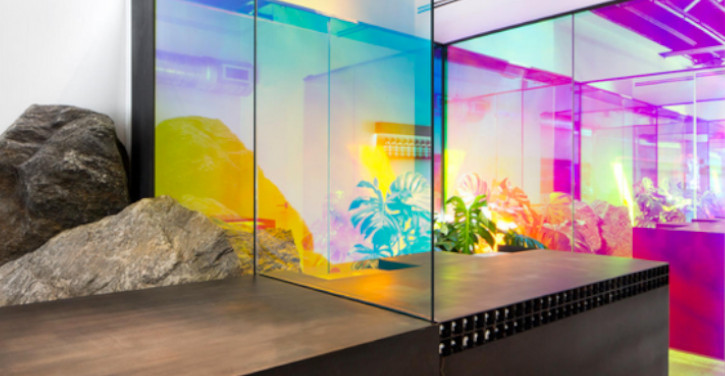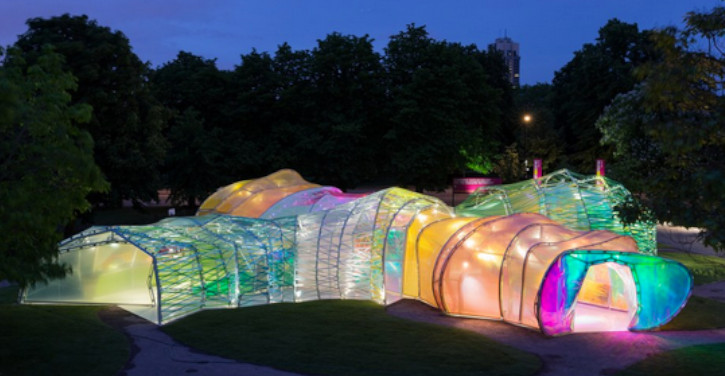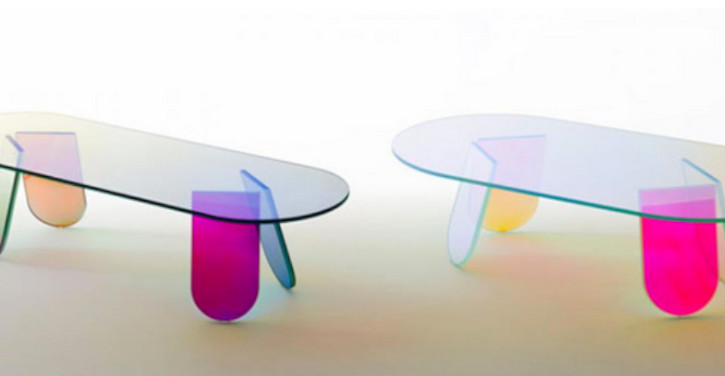IRIDESCENCES: AN INTERPLAY OF LIGHT AND COLOUR
This phenomenon where certain objects and living beings seem to change colour when looked at from different angles or perspectives is a common occurrence in everyday life. From insect wings to oil spills, bubbles to CDs, this spectacular visual effect has now permeated the world of design and architecture. The creation of spaces and objects that adapt iridescent tonalities draws parallels between futurism and new technology to create an ultramodern, polychromatic aesthetic.
We want to share with you our fascination with this optical phenomenon when applied to architectural spaces, interior design and industrial design.
In the end, it all depends on the perspective. Read On & Enjoy!
Offices
– Privacy –
A spectacular use of iridescence is achieved by the Architecture Studio, A+I, in Canvas Worldwide’s LA office. With an objective of offering a degree of privacy for the conference room set in the open plan office, A+I used dichronic glass to intentionally reflect the light whereby creating an opaque effect from the outside while maintaining transparency from the inside.

Stores
– Experiences –
Esteemed architect, Frida Escobedo, wanted to transpose the essence of Wynwood’s colourful graffiti murals into the Aesop store in the same Miami neighbourhood. Depending on the angle and intensity of the sun, the hues of the dichronic glass change throughout the day instilling a sensation of constant movement and shaping the visitors’ experience of the store space.

Structures
– Possibilities –
The 2015 Serpentine Pavilion by Spanish architects, SelgasCano, for the Serpentine Gallery in London is an iridescent masterpiece. An amorphous, polygonal structure, it consists of panels of translucent, multi-coloured fluorine-based polymer (ETFE) woven through and wrapped like webbing. Inspired by the chaotic London Underground, the Pavilion featured numerous entries and exits as well as a “secret corridor” between the outer and inner layers of the structure.

Furniture
– Subtlety –
Spanish designer, Patricia Urquiola, presented her new furnishings collection, characterised by an iridescent material similar to glass, at Milan’s Salone del Mobile. The inclination of each of the glass plates creates a visual effect of changing colour depending on the perspective which produces an endless range of prismatic effects for each of the furnishing pieces.






